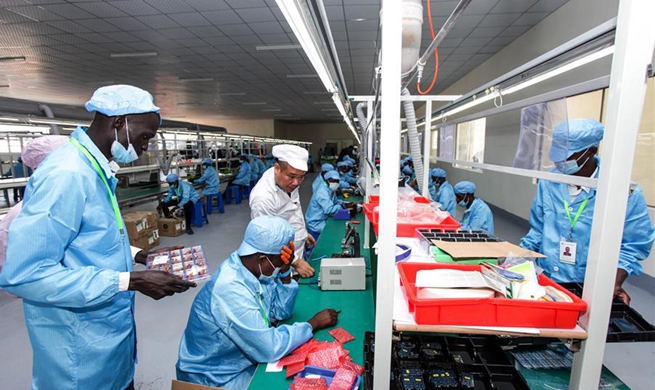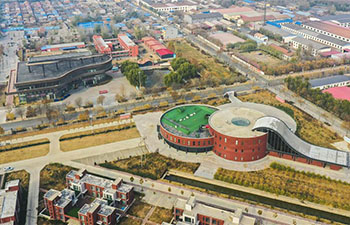CHICAGO, Nov. 22 (Xinhua) -- Researchers at Washington University School of Medicine in St. Louis and Harvard Medical School have had a first detailed look at the inner structure of cilia, or flagella, the whiplike appendages on cells that perform diverse tasks required to keep the body healthy.
According to a news release posted on the website of Washington University Thursday, the researchers used a technique called single particle cryo-electron microscopy to get the first look at 33 specific proteins arranged inside cilia, within structures called ciliary microtubule doublets, in a strict repeating pattern.
"Among the proteins identified, five are associated with diseases that have been studied in mice and people," said co-author Susan K. Dutcher, a professor of genetics at Washington University. "But until now, no one knew that these proteins were found inside cilia. We are just beginning to understand their roles in normal and disease states."
The researchers studied cilia in a type of algae called Chlamydomonas reinhardtii, which are single-celled organisms that have cilia structurally and biochemically similar to those of more complex organisms, including people. The cilia of single-celled C. reinhardtii are capable of more than one type of motion.
"In some situations, the cilia are doing what you might consider a breast stroke," Dutcher said. "In others, the motion is more of an S-shaped wave. The cilia of many cells in mammals can only produce one of these motions. But the single-celled C. reinhardtii, perhaps to help it adapt to its environment, can switch between them."
"This new study is exciting because it fills in a lot of missing information about the structure of cilia," said senior author Rui Zhang, an assistant professor of biochemistry and molecular biophysics at Washington University.
Cilia are implicated in multiple human disorders, including polycystic kidney disease, which affects some 600,000 Americans and requires dialysis; primary ciliary dyskinesia, which causes chronic lung disease, misplaced organs and infertility; Bardet-Biedl syndrome, which causes patients to become blind in childhood and leads to diabetes, kidney disease and extreme obesity; and many congenital heart defects, which occur when left-right asymmetry goes awry and require complex surgeries to repair.
In the next step, the researchers plan to use the latest techniques of cryo-electron microscopy to study the Chlamydomonas mutants of each of the 33 proteins inside cilia to seek answers to many questions that have arisen from this new and detailed knowledge of the structure.
The study was published in the journal Cell.

















